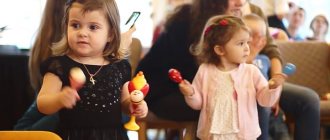Features of the emotional development of a preschool child
The problem of our time is that many children have problems in emotional development, namely, they do not know how to respond to the feelings and states of others, and react inadequately to many things. Today, a child’s best friends are a TV and a computer, a smartphone and a tablet, and his favorite activities are watching cartoons and computer games. As a result of this lifestyle, children communicate less with both adults and peers; Preschoolers are not attentive and insensitive to others, they do not know how to control and show emotions appropriately. But communication significantly enriches life, making it bright, filled with emotions and impressions.
The preschool period is a fairly short period of human life. Therefore, it is important to lay good personality foundations at this time. Equally important is the emotional development of the child, which has its own special characteristics.
When a child is 1-3 years old, his emotional sphere is characterized by:
- lack of empathy
- characteristic emotional reactions associated with his desires
- inability to choose and make decisions
- egocentrism
- the emergence of self-awareness (the baby begins to recognize his reflection in the mirror, respond to his name, tries to be independent, begins to use the pronoun “I”
- high self-esteem (I am good)
- inability to see the consequences of actions
- the importance for the child of an adult’s assessment and reaction.
At the age of 4-6 years, the emotional sphere of the child is characterized by:
- a calmer emotional background of perception
- manifestation of emotions along the chain “desire, idea, action, emotion”
- more controlled emotional processes
- development of emotional anticipation (the child tries to anticipate the future result and how it will be evaluated)
- the appearance of affective reactions
- the emergence of new motives for activity
- the ability to evaluate one's behavior.
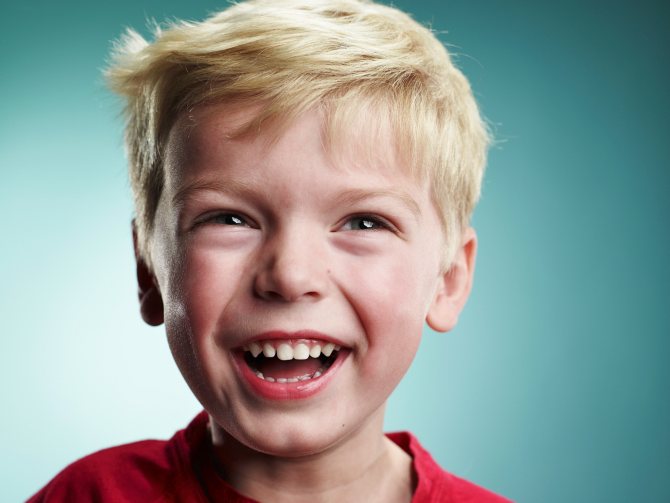
A 4-5 year old child is a small person with a fairly diverse range of emotions. His feelings and experiences are connected, to a large extent, with the atmosphere in the family circle. New skills and interests contribute to the emergence of a whole range of different emotions of the child, as well as needs and motives. A preschooler's range of emotions and feelings gradually becomes more complex: he can already feel not only joy or fear, but also jealousy, sadness, pity, anger, cheerfulness, tenderness, shyness, surprise, pleasure, etc. A preschooler can already express feelings using different intonation and facial expressions.
Features of the development of the emotional sphere of preschool children:
- they still cannot control their emotions and experiences
- they master social forms of expressing feelings
- their feelings and emotions become more reasonable and voluntary
- preschoolers begin to develop higher feelings (aesthetic, moral, intellectual).
Watch a video about the importance of emotional and sensory education of a person
If you want to find out to what extent your child has developed certain emotions and feelings, we recommend that you resort to methods for diagnosing the child’s emotional sphere.
Development of the emotional-volitional sphere of the personality of a preschooler
Lecture. Development of the emotional-volitional sphere of the personality of a preschooler
Topic 3.4.1. Development of the emotional-volitional sphere of preschool children.
1.Emotional development in preschool age.
2. Development of higher feelings in preschool childhood.
3. Volitional development of preschool children.
4. Development of the motivational-need sphere of preschool children as the basis of personality orientation.
5. Factors of deviant behavior in preschool children.
6. Psychological and pedagogical conditions for the prevention and correction of deviations in the development of the emotional-volitional sphere in preschool children.
1.Emotional development in preschool age.
Mechanisms of the emergence of emotions and feelings in preschool childhood:
- “contagion” with the emotional states of others
- imitation of adults, fairy-tale and “cartoon” characters
- emotional anticipation (senior preschooler).
The general patterns in the development of the emotional sphere of personality in preschool age are the following:
1. First, emotions appear that reflect the simplest experiences (satisfaction of natural needs, safety needs)
2. Enrichment and differentiation of experiences
3. Development of feelings as a generalization of emotions aimed at a specific object (bad wolf, good fairy)
4. Separation of the subjective attitude from the object of experience at the 4th year of life (up to 3 years: the nurse is a “bad aunt” because she hurts)
5. In preschool age - expansion of the content of emotions, deepening and duration of experiences, formation of the ability for emotional self-regulation.
Let us consider the emotional formations of the personality of a preschool child in the sequence of their appearance in ontogenesis.
1) “Revival complex” - 1.5 -2 months.
The emotional coloring of the child’s relationships with the people around him appears. The baby develops a positive emotional attitude towards the mother or another close adult who provides care, feeding, and shows emotional reactions to him - a smile, physical contact, verbal appeals. The “revitalization complex” is a system of step-by-step actions for a newborn: concentration on an object that has attracted attention (visual and auditory concentration) and actively attracting the attention of an adult (movements of arms and legs, smiling and humming). The infant's emotional reactions manifest themselves in the form of emotional identification and are carried out through infection and imitation. Thus, the baby seeks to share his experiences with an adult.
2) Transformation of the content of emotional experiences.
According to A.V. Zaporozhets, the emergence of new emotions is, first of all, associated with a change in the content and structure of the child’s activity.
In preschool age, in the context of various productive activities (modeling, drawing), acquaintance with nature and music, aesthetic experiences as the ability to feel beauty in the surrounding life and in works of art. Activities and didactic games evoke intellectual emotions and form intellectual feelings on their basis: cognitive interest, surprise, curiosity (inquisitiveness), confidence or doubt in one’s judgments, joy from the solution found. Moral feelings - a sense of friendship, justice, duty, shame, guilt - develop in a child as a result of the practical fulfillment of the moral requirements that people around him make of him.
3. Socialization of emotions.
Initially, the socialization of the child’s emotional sphere is determined by the emergence of mechanisms of emotional syntony and emotional decentration. Emotional syntony as an emotional contagion appears during the newborn period and goes through a development path from a holistic set of experiences regardless of the subject of the experiences to complex forms of empathy for differentiated objects of communication. In older preschool age, syntony loses its global significance. The condition of another person affects the child only if it is significant in the system of personal relationships, as well as if it is actively included in the situation of the occurrence of this condition. Decentration as a mechanism for overcoming children's egocentrism consists in changing the child's position when comparing different positions (one's own and another). Signs of emotional decentration appear only by the age of 3 due to the separation of oneself and the other as independent objects of interaction.
Throughout the development of the child, new complex forms of social experiences appear - empathy, sympathy, assistance to another person, necessary for joint activities and communication. Many researchers define this complex of social experiences as various forms of empathy experiences. Senior preschool age is characterized by a specific form of empathic response: from a direct emotional response to a form of empathic experience mediated by moral criteria and relationships. M. Hoffman identified and described sympathetic distress as a conscious emotional reaction of sympathy, which is caused by the child’s own emotional experience of negative experiences and is formed between 6 and 9 years.
The main features of the emotional sphere in preschool age:
- the child masters cultural (social) forms of expressing feelings; emotional anticipation is formed; feelings become more conscious, generalized, reasonable, arbitrary, non-situational; higher feelings are formed - moral, intellectual, aesthetic; saturation, intensity of the child’s emotional life. The child masters the highest forms of expression - expressing feelings through intonation, facial expressions, pantomime, which helps him understand the experiences of another person and “discover” them for himself. The inclusion of speech in emotional processes ensures their intellectualization, they become more conscious and generalized. The ability to self-regulate emotions appears - the word helps the preschooler manage his emotions (hold back tears).
Personal aspect of the development of the emotional sphere in preschool age:
- Disruption of the usual situation can cause stress and an acute affective reaction (adaptation to kindergarten)
- Excitation often prevails over inhibition
- The inability to “slow down” intense joy can lead to crying
- During crises, failure to satisfy new needs can cause a state of frustration (aggression/depression)
- Failure to meet expectations can cause persistent negative emotional states - gloominess, depression, apathy
- The emergence of emotional anticipation in older preschoolers (joy in anticipation of a gift, fear of punishment)
— The emergence of emotional regulation of activity (positive emotions “inspire” the child).
2. Development of higher feelings in preschool childhood.
One of the most important directions in the development of the emotional sphere of preschoolers is the development of higher feelings (intellectual, aesthetic, moral), which is closely related to the formation of concepts of bad and good, beautiful and ugly, with the development of cognitive needs, moral consciousness of the individual. Aesthetic feelings are manifested in an emotional attitude towards the heroic, comic, ugly in nature, in life, in art, in the process of perception and creativity. Intellectual feelings develop: curiosity, inquisitiveness, surprise, a sense of new things, a sense of humor. The development of moral feelings is closely related to the nature of the child’s relationships with adults and peers. These experiences are associated with the satisfaction or dissatisfaction of their desires to comply with the demands of social life. These feelings include a sense of duty, sympathy, responsiveness, concern for others, etc. At the age of 5–7 years, a child develops a sense of duty in relation to many adults and peers, and a preschooler begins to experience this feeling in relation to children.
Preschoolers are characterized by a unity of higher feelings. The child evaluates as “good” objects and phenomena that evoke in him aesthetic (good means beautiful), ethical (good means kind), intellectual (good means interesting) experiences.
Thanks to the ability to emotionally decenter, a preschooler develops a sense of friendship. The source of humane feelings is relationships with loved ones. At previous stages of childhood, by showing kindness, attention, care, love, an adult laid a powerful foundation for the formation of moral feelings. Among the leading factors influencing the emotional development of a child, A.V. Zaporozhets called the children's team. Based on joint activity, mediated by emotional standards - moral norms, the child develops an emotional attitude towards people, empathy arises. A significant factor in the development of humane feelings is role-playing play. In work activities aimed at achieving results, new emotional experiences arise: joy from general success, sympathy for the efforts of comrades, satisfaction from the good performance of one’s duties, dissatisfaction from one’s poor work. When children become acquainted with the work of adults, diligence is formed.
Thus, the genesis of higher feelings in preschool childhood can be represented as follows:
- 2-3 years – the beginning of the formation of all higher feelings
- Younger preschooler - characterized by unity of higher feelings (beautiful - good)
- The first to appear are intellectual ones - curiosity, inquisitiveness, sense of humor
- Aesthetic feelings - admiration for the beautiful in nature, art, and people; disgust for the ugly
- Moral feelings - duty, guilt, pride, shame, dignity
- By the age of 6-7 years, higher feelings become motives for behavior (empathy for a friend, helping one’s mother, curiosity - a passion for reading)
- Mastering the culture of feelings, intellectualization of feelings
3. Volitional development of preschool children.
In the development of will, L.S. Vygotsky distinguished two levels: hypobulic - unconscious, not associated with understanding the situation, “blind imitation” and target, at which will is already a cultural function that arises as a result of the social and intellectual development of the child. Preschool age is characterized, in his opinion, by the emergence of will as the ability to consciously control behavior, the transition from involuntary to voluntary with the help of symbolic stimuli - words. The development of will consistently manifests itself in specific forms:
- The first form is voluntary movements - sit quietly, look at the sample. The basis is direct visual control. External control is also necessary - instructions from an adult. Internal control - based on muscle sensations.
- The second form is control of one’s own body; coordination of movements is ensured based on sensorimotor representations.
Stages of development of volitional action:
1. Development of goal setting as the initial stage of volitional action.
Younger preschoolers set goals related to their personal interests and immediate desires; elders can set goals that are important not only for them, but also for those around them. The free choice of a goal, one’s behavior, determined not by external circumstances, but motivated by the child himself (L.S. Vygotsky) becomes characteristic.
2. Mastery of planning for the implementation of volitional action.
The performance of volitional actions depends on speech planning and regulation. It is in verbal form that the child formulates for himself what he intends to do, discusses with himself possible solutions in the conflict of motives, reminds himself of why he is performing the action, and “orders” himself to achieve the goal.
3. Development of control actions in the implementation of volitional action.
The first prerequisites for controlling one’s behavior arise at an early age and are caused by the child’s desire for independence. In the development of self-control in a preschooler, two lines stand out: mastering methods of self-test and developing the need to check and correct one’s work.
In the development of a child’s voluntary action, two phases are distinguished: 1 - preliminary orientation (observation of the actions of an adult, formation of an image of action; 2 - own action, comparison with a model and improvement. The established image serves as a regulator of voluntariness.
Features of the development of volitional action in preschool children:
- Separation of sensory and motor spheres
- Dependence of voluntariness on the volume of visual, auditory, motor representations and experience, on the level of understanding and awareness of verbal instructions
- by the age of 4, the ability to control cognitive processes and attention appears
- 5th year – situational control of behavior and emotions appears.
In general, the genesis of volitional action in the preschool period is presented as follows: the youngest preschooler is a situational, fragmented manifestation of will; middle preschooler – the number of volitional actions increases, but involuntary ones predominate; The older preschooler is a child capable of long-term volitional actions. However, it must be admitted that there are a number of shortcomings in the development of the volitional sphere of a preschool child. Most of the shortcomings in the volitional behavior of children, whims, stubbornness, observed in early childhood, are based precisely on errors in nurturing the child’s will, expressed in the fact that parents please him in everything and do not make demands that must be unconditionally fulfilled. They do not teach him to obey certain rules of behavior. The other extreme of family education is overloading children with overwhelming tasks. The child is often unable to overcome the task and gives up halfway, gradually getting used to not finishing what he started. The following types of volitional disorders in preschoolers are distinguished: unformed structure of volitional action (planning, overcoming difficulties, control..), abulia, hyperbulia, catatonia (catatonic stupor/excitement).
The conditions for the development of will in preschool children include:
- Adult Demands and Expectations
- Peer expectations and sanctions
- Rules of the game and other activities
- Motivation for recognition, success, prestige
- Feelings of shame, pride
- Internal position of the child’s personality (by age 7)
- Education and training
- Critical thinking is the ability to self-assess.
Play activity is extremely important in the development of will. Active, educational games transform the child's will. In addition, game rules and sustainable actions develop such strong-willed traits as endurance, the ability to overcome difficulties, take into account the intentions of a game partner, and decisiveness in actions.
4. Development of the motivational-need sphere of preschool children as the basis of personality orientation.
The period of the most intensive formation of the motivational sphere is preschool age, in which motivation mechanisms begin to form and a hierarchy of motives is built.
The information that a child receives arouses interest and a desire to take part in events, and forms such internal motivation that appears in childhood and persists in older preschool age. The leading type of activity of preschoolers—play—contributes to the development of the child’s motivational sphere. New interests and related goals arise. At the same time, the formulated O.K. begins to be implemented. Tikhomirov’s law of ontogenetic development of goal formation: setting a goal and choosing the means to achieve it. Many four-year-old children already say before drawing that they are going to draw, that is, they indicate a goal-object. At the age of five, 80% of children already draw up a preliminary plan for the drawing; at the age of six, all children, when drawing, indicate the goal, what should happen. This gradual formation of purposefulness is also typical for other types of activities of a preschooler. However, even 6-7 year old children are still characterized by the final formation of the goal in their minds as the action progresses.
Thus, already from the age of 4, the meaning-forming function of the motive begins to manifest itself, as the child begins to plan the meaning of his activity. At the age of 4, a subordination of needs and desires appears. Dominant attitudes appear: some are egoistic, others are altruistic. The diverse interests of children acquire relative stability. As a result of all of the above, the child’s individual motivational system (sphere) begins to take shape.
In the process of playing with peers, preschoolers learn to subordinate their behavior to certain rules that conflict with their fleeting desires, as noted by L.S. Vygotsky, in play the child learns to act in the knowable, i.e. mental, not visible situation, relying on internal tendencies and motives, and not on motives and impulses that come from the thing. This facilitates the transition from motives that have the form of affectively colored immediate desires to motives-intentions associated with self-control. The presence of an adult or other children helps to restrain the child's immediate impulses. In older preschool age, the child begins to restrain himself even under the imaginary control of others. There is a suppression of internal impulses due to the attractiveness of objects, and not just the choice of one object from many, as in younger preschoolers. This transition was well outlined by D. B. Elkonin: in a younger preschooler, desires have the nature of affect: it is not the child who controls the desires, but they control him. He is in the power of desires, just as he was previously in the power of attractive objects. In many cases, an older preschooler can already overcome his desires.
If in younger and middle preschoolers the “internal filter” is used by children in the process of motivation from case to case, then in pre-preschool age it begins to take an active part in the decision-making process, which is associated with the development of not only the moral, but also the volitional spheres of the individual. By the age of six, children clearly demonstrate the ability to put themselves in the place of another person (identification) and see things from his position, take into account not only their own desires, take them into account. A sense of duty appears that regulates the child’s behavior in simple situations. In order to achieve the desired goal, older preschoolers can do work that does not arouse their interest. By the end of preschool age, the child begins to evaluate himself from the point of view of learned rules and norms of behavior constantly, and not from time to time. The enrichment of self-image leads to the emergence of a need for respect, mutual understanding with others, and their empathy. However, awareness of the motive remains weak.
In older preschool age, children develop new motives: achieving success, competition, rivalry, and avoiding failure. The indifference of younger preschoolers to successes and failures is replaced in middle preschoolers by the experience of success and failure. In gaming motivation, the emphasis shifts from the process to the result: if children 3-5 years old enjoy the process of playing, then 5-6 year olds enjoy not only the process, but also the result of the game, i.e., winning. The most powerful stimulant for a preschooler is encouragement and receiving a reward. Direct prohibition, not reinforced by other motivators, has a weak external influence on the decisions made by the child.
A number of authors point to the existence of special needs in a child: for personalization (A.V. Petrovsky), for self-actualization (A. Maslow). The motives of a child’s behavior change significantly throughout preschool childhood. The youngest preschooler mostly acts under the influence of emerging situational feelings and desires. The actions of an older preschooler become more conscious: he can explain why he acted this way and not otherwise in this case.
It is possible to identify types of motives that are typical for preschool age and have the greatest impact on children’s behavior. These are motives associated with children’s interest in the world of adults, with their desire to act like adults. Another group of motives is gaming. The third is the motives for establishing and maintaining positive relationships with adults and other children. In preschool childhood, the motives of self-love and self-affirmation develop. During the period of senior preschool childhood, the formation of new motives associated with the complication of children’s activities occurs: cognitive and competitive. By older preschool age, interest in knowledge becomes an independent motive for the child’s actions and begins to guide his behavior. Older preschoolers introduce competitive motives into activities that do not themselves include competition. Children constantly compare their successes, love to brag, and are acutely aware of mistakes and failures.
Of particular importance in the development of behavioral motives are moral motives that express the child’s attitude towards other people. These motives change and develop throughout preschool childhood in connection with the assimilation and awareness of moral norms and rules of behavior, understanding the meaning of one’s actions for other people. Younger preschoolers act in accordance with moral standards only in relation to those adults or children for whom they feel sympathy. By the end of preschool childhood, the child understands the importance of fulfilling moral standards. Among the moral motives of behavior, social motives - the desire to do something for other people, to benefit them - are beginning to occupy an increasingly important place. In older preschoolers, one can observe the conscious fulfillment of moral norms related to helping other people.
The key point in the development of the motivational sphere of preschoolers is the phenomenon of “subordination of motives.” The subordination of motives is the most central new formation in the development of the personality of a preschooler. Subordination leads to the fact that various motives lose their equality and are built into a system. A child may give up an attractive game for a more important, although perhaps more boring, activity that is approved by an adult. The emerging hierarchy of motives gives a certain direction to all behavior. However, this ability develops gradually.
An important stage in the development of the motivational sphere of older preschoolers is the formation of motivational readiness for learning at school, which includes the child’s readiness to accept the position of a student. This includes a formed hierarchy of motives with highly developed learning motivation. A child may want to go to school because all his peers will go there, or because he will receive a new beautiful schoolbag. It is the desire to become a schoolchild, to study, to gain knowledge, to have the rights and responsibilities of a schoolchild that constitutes the “internal position of a schoolchild,” which is the basis of readiness for school.
5. Factors of deviant behavior in preschool children.
Children with so-called deviant behavior are of particular concern. Deviant behavior is a system of actions or individual actions that contradict accepted legal or moral norms in society. The main type of deviant behavior is immoral behavior, the causes of which are various interrelated factors: individual, psychological, pedagogical, social. In domestic pedagogical science and practice, deviations in the behavior of preschool children are explained by the specifics of age (incomplete development of the nervous system, the predominance of excitation processes over inhibition processes, insufficient functioning of the second signaling system, etc.). At the same time, pedagogical practice has reliable information that the deviant behavior of some children is so progressive and contrary to ethical norms and universal human values that it cannot be explained by their age characteristics. Age-related characteristics can contribute to the emergence and functioning of deviant behavior, but not on their own, but as a result of parents ignoring their responsibilities, pedagogical mistakes made and unfavorable conditions developing for the normal personal development of children. social contacts, and subsequently in relation to their own children. As studies show (B.N. Almazov, S.A. Belicheva, M.I. Buyanov, V.I. Garbuzov, A.I. Zakharov), the main reasons for a child’s behavioral deviations are in the family. It has been established that an incomplete family has a more traumatic effect on children than a complete one. In family psychology, there is a statement that the absence of one of the parents deprives the child of a whole world of moral and emotional relationships. An incomplete family has limited educational opportunities, but there are exceptions. Inferior and dysfunctional families that create conditions of increased risk for deviant behavior of preschoolers include other types of families:
- a conflict family in which there is psychological tension in relationships, there is a lack of mutual understanding and there are pronounced differences in views, attitudes, interests, and needs. This is a family in which peace and harmony are based on temporary compromises.
- an asocial family, where antisocial tendencies predominate, a parasitic lifestyle, family members come into conflict with the law.
- a family with an alcoholic lifestyle - the main interests of family members are reduced to the interest of consuming alcoholic beverages, narcotic and toxic substances, without performing the social - positive functions of the family.
- formally prosperous family - there is no commonality of needs, life goals, mutual respect between family members; family responsibilities are carried out formally, often the family is on the verge of divorce, which is hampered by material and housing considerations.
Family dysfunction is one of the main reasons that determines the state and dynamics of deviant behavior in preschool children. The occurrence of various types of behavioral disorders in children occurs, as a rule, in dysfunctional families. A dysfunctional family is one where there are defects in upbringing, meaning a dysfunctional attitude towards the child. According to A.I. Zakharova, “disturbed family relationships and improper upbringing are the causes of neurosis.” Neurosis (childhood) is a psychogenic disease of the developing personality, i.e. a disease that affects significant aspects of personality formation, the system of its relationships, first of all, relationships in the family and then relationships with peers and other adults. The conditions of family upbringing in childhood and their connection with the occurrence of deviant behavior are also the subject of study by foreign researchers (Curtis GC (1963); Spinetta JJ, Rigler D. (1972); Widom CS (1989)) in the paradigm of the “cycle of violence” . In this concept, child abuse, expressed in physical and emotional cruelty, sexual violence, neglect, contributes to the development of aggressiveness in the child and a tendency to further reproduce similar forms of behavior.
A typical manifestation of deviant behavior in children is aggressive behavior. According to research by S.N. Enikolopova, “antisocial behavior, including aggressive behavior, in preschool age has its source, first of all, in a violation of communication in the family, as a result of which children’s ethical concepts and moral values are distorted. Communication in kindergarten, and later in school, not only does not compensate for the shortcomings of family communication, but most often aggravates the situation. The main types of compensatory activities of preschool children are sublimation and fantasy. Didactogeny, which is a neurotic disorder that arises in connection with the learning process, plays a role in the development of aggression.
A particularly alarming form of deviant behavior in children is the first try of alcoholic beverages. In the studies of V.Yu. Zavyalov shows that a certain attitude towards alcohol and the rituals of drinking it begins to form in a child from the age of 4-5. In the studies of M.A. Galaguzova established the reasons for this: alcoholic environment, pedagogical illiteracy of parents and family alcoholic traditions. In the studies of V.S. Guskova and A.I. Tsaplin shows that more than half of children under the age of 6-7 years have already had contact with alcohol-containing drinks through their family.
Running away from home and vagrancy are considered typical childhood deviations. According to research by A.L. Arefiev's motives for vagrancy and running away from home have three important reasons: parents' drunkenness; the absence of one or both parents and physical abuse of children by parents. Thus, unfavorable features of a child’s interaction in the family cause disruptions in socialization, and we understand the emerging deviant behavior of children in preschool age as the result of unfavorable social and moral development, unsuccessful socialization of the child. So, summarizing the material, the causes of deviant behavior in children can be divided into several groups:
— medical and biological (health status, hereditary and congenital properties, disorders in mental and physical development, intrauterine development injuries, etc.);
- socio-economic (material problems of the family, unfavorable psychological climate in the family, immoral lifestyle of parents, inability to live in society, etc.);
— psychological (self-acceptance, neurotic reactions, emotional instability, communication difficulties, lack of skills to interact with peers and adults, etc.);
- pedagogical (discrepancy between the content of preschool educational programs and the conditions for raising children with their psychophysiological characteristics, the pace of mental development; lack of cognitive interest, closedness to communication in play and informal communication, etc.).
Solving the problem of deviant behavior in preschoolers should always begin with identifying the causes. Correctly identified causes will contribute to well-structured and effective corrective and preventive work.
6. Psychological and pedagogical conditions for the prevention and correction of deviations in the development of the emotional-volitional sphere in preschool children.
One of the areas of primary psychoprophylaxis is to identify the preconditions for a child’s antisocial behavior in the family. Early prerequisites primarily include unsuccessful family socialization. Any serious deviation of family relations from the norm leads to a decrease in the quality of the family's educational capabilities. The result of incorrect relationships in the family are not only “problematic”, “difficult”, “impossible” children, but also children with “complexes”, “downtrodden”, “unhappy”. It is known that a dysfunctional family negatively affects the child’s cognitive activity, his speech, intellectual, and personal development. Such children are characterized by increased conflict, anxiety, a large number of fears, aggressiveness and hostility towards others. Anxiety and uncertainty in children lead to a sharp decrease in the emotional background and a tendency to avoid communication. The normal development of the child’s personal sphere is disrupted. The lack of normal relationships in the family and feelings of love for the child prevents the child from developing a sense of self-worth. The child has problems developing a sense of trust in the world in general, which in the future can lead to difficulties in communication and, as a consequence, the emergence of addictions.
The most significant socio-psychological prerequisites for deviant behavior in children of senior preschool age are:
- the severity of excessive demands and control, ignoring the child’s wishes, evaluative attitude towards the child;
- low level of empathy for the child; maternal rejection;
- unconscious parental attitudes towards “allowing” children to use forceful methods of resolving conflicts with peers;
- unfavorable position of the child in the system of interpersonal relationships with peers in the kindergarten group, stigmatization
- actively negative, ignoring the type of pedagogical communication of the preschool teacher.
Important for correctional and developmental work with preschool children is:
identifying the positive qualities of the child and promoting their development;
support for the positive development of the child’s personality;
restoration of positive qualities, habits, needs that were drowned out by unfavorable circumstances;
positive assessment and promotion of the child’s success
correction of those negative properties that the child considers positive.
Particular attention to correctional and preventive work should be paid to the creation of the child’s own system of life values that are correlated with the cultural values of society.
Diagnostics
Basic diagnostic methods for the emotional sphere of children:
- testing
- observation
- survey
- conversation
- survey
- analysis of samples of children's creativity (drawings).
When observing a preschooler, pay attention to factors such as emotional background, mood, degree of expression of emotions, level of emotional mobility. By observing, you can easily notice how rich the child’s emotional background is, whether the child knows how to control his emotions, and whether he is characterized by emotional instability.
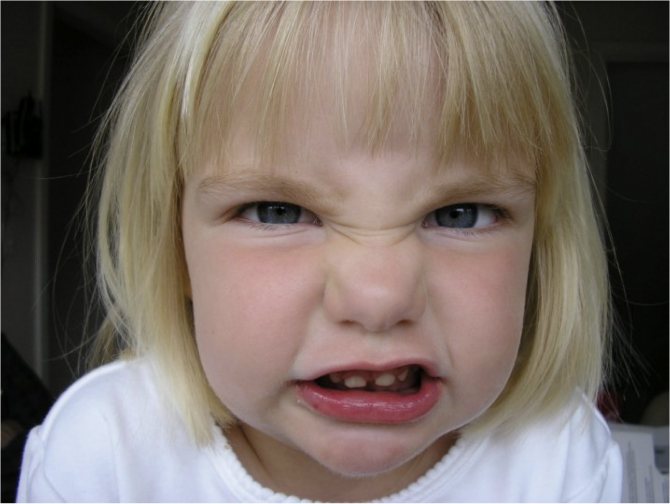
Using one of the diagnostic methods or in combination, you can find out:
- How adequate is the preschooler’s reaction to phenomena?
- how he perceives and interprets the states and moods of other people
- the breadth of the range of emotions that the child understands and experiences, the depth of his experiences, ways of conveying emotions through speech;
- Is it appropriate to display emotions during communication?
These methods can be used by both professional child psychologists and kindergarten teachers.
Rules of emotional education
Emotional education of a child does not require large physical and time expenditures. You just need to follow some rules.
1. Voluntariness of expression. Teach your child to show his emotions, name them, and understand his feelings. This is especially important for young children who need to let out everything that has accumulated inside. Discuss his feelings with your child, giving him the opportunity to cope with the emotions that arise on his own.
2. The power of expression. Older children should learn to control their emotions: laugh quietly, collect their thoughts, restrain anger, cope with excitement. Teach your children simple self-control skills and monitor your own behavior.
3. Empathy. Children should not be indifferent. If your child does not worry about cartoon characters or other people, then he needs to be taught empathy. Ask him how he feels, whether he feels sorry for the hero, whether the child wanted to help. Discuss life situations with your child. Offer to describe the feelings and sensations of the participants in the events. Think about how you can show your concern towards another person: congratulate, express sympathy, help in something. Free your children from envy and gloating from childhood, this will make them happy
Empathy in children
The most important component of the emotional development of a preschool child is the development of empathy, namely the ability to sympathize and understand the experiences and emotions of other people. A child who has developed empathy will always put himself in the position of this or that person and offer him his help.
"This is interesting. The author of the theory of emotional intelligence, Daniel Goleman, is convinced that success in life depends not only on the level of intelligence, but also on a good ability to manage one’s own emotions. And by understanding one’s own emotions, a person will feel and be aware of the emotions of others.”
Forming empathy in a preschooler is the key to successful schooling, easy socialization, and problem-free communication. If only for this reason, parents should definitely pay attention to the development of empathy along with the development of the child’s intellectual, communication, cognitive, creative and other abilities.
Tips for developing empathy:
- Create a warm atmosphere in the family where love and mutual understanding will reign.
- Discuss different life situations with your child.
- Introduce your child to the principles of existence in society.
- Explain how to properly deal with people in different situations.
- Explain what consequences this or that behavior of people may have.
- Develop positive social character traits in your child: optimism, trust, forgiveness, solidarity.
- Teach your child to do useful things and help others. Don't forget about praise.
- Empathize with the child, communicate with him about how he feels.
- Develop your child emotionally: discuss thematic images and photographs, depict emotions in front of the mirror, play emotional games.
- Be a role model for your child: adhere to the same principles that you teach your child.

Features of the organization of the pedagogical process in a preschool institution
Preschool age is a bright, unique page in the life of every person. At this time, the process of socialization begins, which establishes the child’s connection with the leading spheres of life: the human world, nature and the material world. The child is introduced to culture and universal values. The child lays the foundation for his health. Preschool childhood is the time of the first formation of personality, the formation of the foundations of self-confidence and individuality of the child.
The goal of such upbringing is not to accelerate the child’s development as much as possible, not to force the timing and pace of his transition to the “rails” of school age, but, first of all, to create conditions for the fullest development of the age-related capabilities and abilities of each preschooler.
In preschool age, the process of cognition occurs in the child in an emotional and practical form. Every preschool child is a little explorer who explores the world around him with joy and surprise. The child strives to be active, and it is important not to let this desire fade in order to promote his further development. The more complete and varied the child’s activity, the more significant it is for him and corresponds to his nature, the more successful his development, the more his potential and initial creative development are realized.
It is rightly noted that the main task of the educator is to fill the daily life of preschoolers with interesting activities, problems and ideas, to involve each child in meaningful activities, to promote the realization of children’s interests and their vital activity. By organizing children's activities, the teacher develops in each child the desire to take initiative and find a reasonable and worthy way out of various life situations.
When organizing the pedagogical process in kindergarten, the question of the specifics of pedagogical and educational work with preschool children is of great importance.
Preschool education contains tasks that have not only educational, but also pedagogical value. These tasks include the formation of correct ideas about the world around us, the development of language, arithmetic and the acquisition of drawing, modeling skills, etc.
A significant number of forms and resources have been developed for pedagogical work with preschoolers, including activities, didactic games and materials. Each of these resources has different capabilities in terms of educational and educational tasks.
Preschool pedagogy selectively approaches the means of educational work with children, in accordance with the tasks of the kindergarten, based on the requirements of active management of the development of each child to ensure a high level of comprehensive development of all children in kindergarten.
Among the means of educational work in a preschool institution, teaching has a great advantage, since it provides an organized teaching role for an adult, which makes teaching very effective.
Teaching applied to a range of educational contents, namely: environmental studies, language learning, development of mathematical concepts, musical skills, movement development, drawing, sculpting and so on, has a profound educational impact on children, develops their abilities and interests, expands horizons, enriches skills in various activities and improves attention. Education makes it possible to raise the development of all children in a group to a higher level and significantly contributes to mitigating the uneven development of children observed in practice.
Emotional impact
The secret of raising a preschooler with the help of emotional influence is not to suppress the child’s emotions, but to direct them in the right direction.
If a child attends kindergarten, then his emotional development will be more effective, since he will be in the company of peers and, together with them, comprehend new things, learn to communicate with them.
Work on the emotional improvement of preschoolers should be carried out in two directions:
- developing the ability to recognize and compare emotions: fun, boring, sad, calm, scary, interesting, etc.
- developing the ability to correctly express emotions and identify the emotions experienced by others.
The emotional impact on the child is carried out by the following means:
- role-playing games
- psycho-gymnastic games
- outdoor games
- communication games
- games and tasks to develop arbitrariness
- games for developing imagination
- game exercises
- mimic sketches
- listening to music and discussing it
- reading fairy tales and stories
- acquaintance with painting.
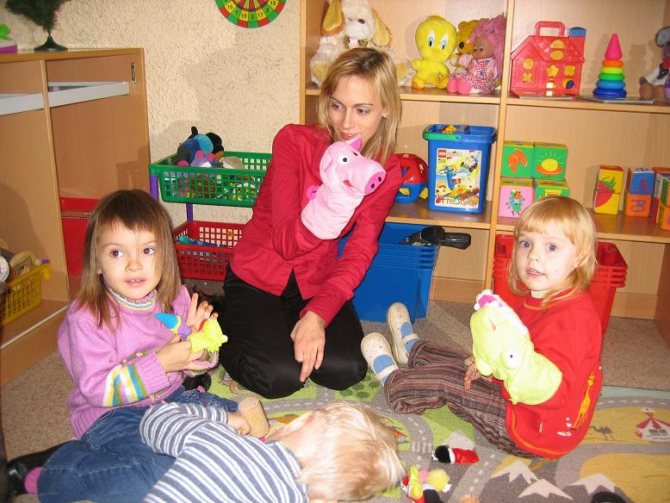
During classes, the child will experience different emotional states, will try to talk about what he feels, will get acquainted with the experiences of the same children, thanks to which he will begin to better understand himself and those around him.
Mistakes on the part of parents
The main problem with a child’s negative emotions is that parents do not understand how to ensure that they develop positive ones. A common mistake parents make when trying to please their children is a huge number of different gifts and toys. This contributes to the fact that the child ceases to experience the joy of receiving new toys and owning them; this seems to him a natural process.
This incorrect approach on the part of the parents directly affects the development of an irresponsible attitude towards things in the child, who will not value what he has and will take all signs of attention for granted. In the future, this attitude will extend to other people's and public things. A small number of toys brings a lot of joy from their possession, and the child takes care of and appreciates them. Subsequently, this develops not only accuracy and thrift as personal qualities, but also instills respect for work.
Formation of the emotional sphere
The formation of emotions and feelings in preschoolers depends on the following conditions :
- A preschooler must communicate with peers: it is in communication that feelings and emotions are formed.
- It is necessary to organize purposeful activities that promote the development of emotions and feelings (listening to music, music lessons, reading).
- It is best to develop emotions and feelings in preschoolers through their main activity - play.
- Labor and creative activity helps to form emotional experiences: joy from success, inspiration, sympathy for the efforts of peers, a feeling of satisfaction or dissatisfaction with the result.
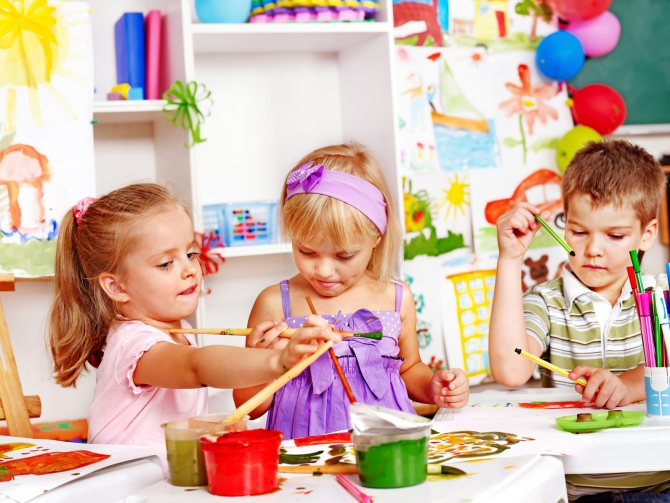
“Did you know that if a person is emotionally well, then he has high self-esteem, he is goal-oriented, has no communication problems, and can easily build and maintain relationships. That is, emotional well-being is a guarantee of a child’s success in the future. The emotional well-being of a child depends not on his innate characteristics, but on the optimal system of upbringing in the family.”
Components of successful formation of the emotional sphere of a preschooler:
- Proper organization of the child’s routine, comfortable for him.
- Activation of the baby’s motor activity, his physical development (morning exercises, outdoor games, physical education sessions).
- Games (role-playing, story-based, didactic, communicative, etc.).
- Introduction to art and independent creativity.
- Reading and discussing fairy tales.
- Psycho-gymnastics (emotional sketches, facial expressions, pantomime).
- Organization of joint activities of children.
- Tasks using visual aids.
Emotions are the basis for a child’s successful mental state, his successful communication, development and future life. The baby reacts to the world around him through emotions. Therefore, it is necessary to develop the emotional sphere of a child from an early age using different types of influence, giving preference to play methods.
Stages and methods of experimental research
To confirm the theoretical provisions of the study in practice, we organized experimental work. Conventionally, it can be divided into three main stages.
The first stage is research.
At this stage, based on the analysis of psychological and pedagogical literature and data from our own experience of working in preschool institutions, the following was done:
- Formation of a research hypothesis;
- Determination of research tools;
- Selection and study of the experimental group.
The methodological apparatus of the research is a combination of methods: Questioning, testing, observation, analysis of activity products.
The testing method is the most important. We used tests published in the psychological literature. In particular, we used a special drawing test “Family Drawing”.
This test can be administered to children as young as five years old. It is based on the recognition that children evaluate the behavior of their parents in their own way, seem different to adults, perceive events differently than we do, and make conclusions different from us. Children's special observations cause emotional reactions that adults do not understand or accept. In the child’s inner world, seemingly incompatible, random things are woven together, fantastic images, their own “theories” and versions arise. Children use them as a basis for their original behavior.
Historically, the use of the Family Drawing technique is associated with the general development of “projective psychology.” The growth of interest in drawing techniques was fueled by the publication of fundamental monographs on this technique by K. Machover (1949) and J. Buck (1948). Drawing techniques became very popular among psychological practitioners in the 1950s and 1960s. In the 60s, this technique quickly spread among clinical psychologists, and in different geographical regions different names (in the USA - V. Hulse, in France - I. Minkowski, M. Moreau, etc.) are associated with priority in its use . E. Hamer (1958) puts it this way: “It was probably, like many worthwhile inventions, born simultaneously in the minds of different people.” However, R. Burns and S. Kaufman (1972) note that the earliest mention in the literature of the use of a family drawing belongs to W. Hume (1951). Without going into details, it should only be used for these purposes before. We can talk about a developed system of analysis and interpretation of family drawings, starting with the work of V. Wolf (1947). This researcher attached exceptional importance to the influence of the family on personality development in preschool age and developed a set of techniques for assessing intrafamily relationships. While drawing, he analyzed:
(a) the order of drawing family members, their spatial arrangement, omission of family members in the drawing;
(b) differences between graphic images in shapes, proportions.
V. Wulf notes that the order in drawing may indicate the importance of the role of the persons drawn in the family. The child draws from more significant to less significant. The author notes that the omission of family members is a rare occurrence and that there is always some motive behind it. Often this expresses a desire to reduce an emotionally unacceptable family member, to get rid of him. As for the characteristics of the characters, the author emphasizes their scale. If the actual situation does not match the size ratio in the picture, this indicates that the size is determined by mental factors rather than reality. Differences in the pattern of individual body parts can also be indicative.
In general, W. Wolf (1947) developed those features of the drawing that would later become the subject of interpretation by other authors.
The novelty of V. Hulse's work (1951, 1952) lies in the analysis of the drawing process (use of pencils, erasing drawings, crossing out, doubts, emotional reactions, spontaneous comments). These data provide additional information about the child’s attitude to the drawn details and his general emotional state.





